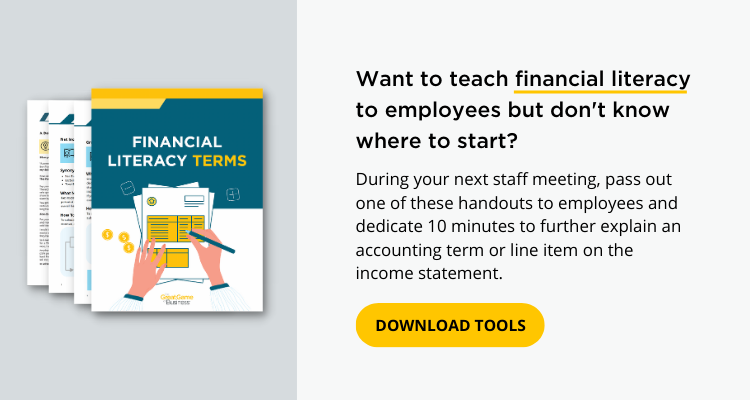 Teaching employees how to read financial statements can be a daunting task. Everyone in your company has different levels of knowledge and experience with the numbers. It can be especially difficult when you have a seasonal workforce, like we do at Amy’s Ice Creams. We’ve been practicing open-book management since 2007; through the years, we’ve found that our favorite game shows have inspired us to make financial literacy training creative and fun.
Teaching employees how to read financial statements can be a daunting task. Everyone in your company has different levels of knowledge and experience with the numbers. It can be especially difficult when you have a seasonal workforce, like we do at Amy’s Ice Creams. We’ve been practicing open-book management since 2007; through the years, we’ve found that our favorite game shows have inspired us to make financial literacy training creative and fun.
Here are some Game Show-themed financial literacy activities that we’ve found useful at Amy’s Ice Creams:
Price is Right
We take our capital expenditures from the Cash Flow Statement and ask the question, “Should we spend on a specific capital expense (for example buy a new vehicle for our delivery department)?" A contestant reviews five prices and must eliminate four incorrect prices to find the correct price of the vehicle. If the contestant wins the entire department gets a paid day off.
What They Learned: The contestant and huddle attendees learn the true cost of a capital expense and the instructor also teaches why it is a capital expense. After the game ends, a simplified cash flow statement forecast is handed out and the crew can play the game for a few more lines on the statement.
Family Feud
This classic game show brings a whole new level of fun to the huddle. Two teams are asked to guess from most expensive to least expensive the major drivers of our COGS (Cost of Goods Sold). The team with the most points wins!
What They Learned: The drivers of COGS were a mystery to some employees. This game made our 10 major drivers real. Bonus: Always explain the story behind each number so your employees have all the information.
Beat the Clock
This exercise gets new employees comfortable looking at the Cash Flow Statement. Two contestants are given an amount of money (a pile of cash) and are shown five disbursements from the actual Cash Flow Statement. In a timed race against the clock, the fastest person to assign the correct dollar amount to the corresponding disbursement wins!
What They Learned: Breaking down the Cash Flow Statement into smaller chunks makes it easier to digest. They are now able to make a connection to their pile of cash and the distributions the company is going to make.
.png)













.png)

